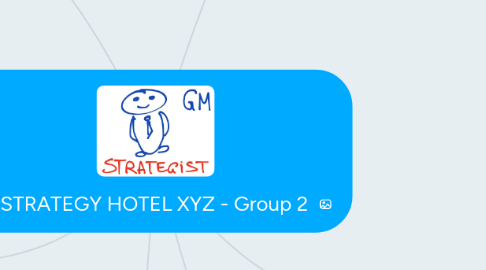
1. Stakeholders
1.1. Customer
1.1.1. Receive good product/service
1.1.1.1. Big impact if customer not happy
1.1.1.2. Increase in personalise service demand
1.2. Owner
1.3. Management
1.4. Employees
1.5. Community
1.6. Tour Operator / OTA
1.7. Suppliers
1.7.1. Provide materials stable through time
1.7.1.1. Without suppliers we cannot produce service/product
1.7.1.1.1. Materials quality control, price negotiating
1.8. Competitors
1.8.1. To have higher market share
1.8.1.1. Increase variety of product/service in the area
1.8.1.1.1. Huge impact if they get the lead of the market and go far
1.9. Government
1.9.1. Policies
1.9.2. Taxes
1.9.3. Visas
1.9.4. Laws
1.9.4.1. Employment laws
1.9.4.2. Union laws
1.9.4.3. Environment laws
1.9.4.4. Recruitment laws
1.9.5. Permits
1.9.5.1. Opening permits
1.9.5.2. Construction permits
1.9.5.3. Alcohol licenses
1.10. Transportation Companies
1.11. Media
1.11.1. Collect good information/sources to publish
1.11.1.1. Increase reputation through publish
1.11.1.1.1. Easy to ruin our reputation
1.12. Designers / contractors
2. Ownership
2.1. Independently owned
2.1.1. Factors
2.1.1.1. Full control
2.1.2. Advantages
2.1.2.1. create own culture & standard
2.1.2.1.1. hire own team
2.1.3. Disadvantages
2.1.3.1. high uncertainty risk
2.1.3.1.1. all start-up costs for the owner
2.2. Consortium
2.2.1. Factors
2.2.1.1. reason to join
2.2.1.1.1. market share/visibility
2.2.2. Advantages
2.2.2.1. brand name recognition
2.2.2.1.1. quality standards
2.2.3. Disadvantages
2.2.3.1. must have standards
2.2.3.1.1. loss of reputation
2.3. Management Contract
2.3.1. Factors
2.3.1.1. outsourcing mgt
2.3.1.1.1. bulding owned by property owner
2.3.2. Advantages of hotel company
2.3.2.1. control over operations
2.3.2.1.1. brand awareness
2.3.3. Advantages of hotel owner
2.3.3.1. receive fee/month
2.3.3.1.1. reservations
2.3.4. Disadvantages of hotel company
2.3.4.1. pay a fee (fixed or % of rev or profit)
2.3.4.1.1. building not made for the hotel
2.3.5. Disadvantages of hotel owner
2.3.5.1. higher risk
2.3.5.1.1. expensive option
2.4. Franchise
2.4.1. Factors
2.4.1.1. owner of brand give permission
2.4.1.1.1. owner of building called ''franchisee''
2.4.2. Advantages
2.4.2.1. support to advertising & marketing
2.4.2.1.1. central reservations
2.4.3. Disadvantages
2.4.3.1. limited products from the brand
2.4.3.1.1. risk all on franchise
3. Environment
3.1. Available of non-renewable goods
3.2. Available of suppliers
3.3. Social factors: Cultural impact; Young generation; Lifestyle trends; Ethnic issues.
3.4. Intenal
3.4.1. company cutlure
3.5. external
3.5.1. Macro
3.5.1.1. Economic Factors: Interest rates & Exchange rates
3.5.1.2. Technological factors: AI Tech; Mobile technology (E-check in); Internet(social media power); Cloud technology(big data)
3.5.1.3. Competitors and airbnb
3.5.1.4. Legal factors: Government law
3.5.1.4.1. Environmental factors: Natural factor affect the hotel building design(earthquake) Being green, sustainability
3.5.1.5. Political factors:Travel ban, Trading policy
3.5.2. Micro
3.5.2.1. Porter's Five Forces
3.5.2.1.1. Power of Buyers, Supplier etc-
4. Output
4.1. Value Proposition
4.1.1. If product have high position in the market
4.1.2. If product have lower position in the market
4.2. Results
4.2.1. Good reputation
4.2.2. Market shares
4.2.3. ROI
4.2.4. Attractive more investores
5. What does a Strategist do?
5.1. Managing the limited firm's capabilities in order to achieve the long-term goals of the company, and balancing the needs of the key stakeholders in a volatile, uncertain, complex, and ambiguous (VUCA) and rapidly changing environment and proposing a product of higher value to the customers (citation needed, 2019).
6. Firm's Capabilities
6.1. Competences
6.1.1. Experiences
6.1.2. Knowledge
6.1.3. Procedures
6.2. Resources
6.2.1. Service
6.2.2. Social networks
6.2.2.1. Communities
6.2.3. Tangible
6.2.3.1. Capital(Money)
6.2.3.2. Employees
6.2.3.3. Physical
6.2.3.3.1. Properties
6.2.3.3.2. Facilities
6.2.3.3.3. Products
6.2.4. Intangible
6.2.4.1. Brand reputation
6.2.4.2. Time
